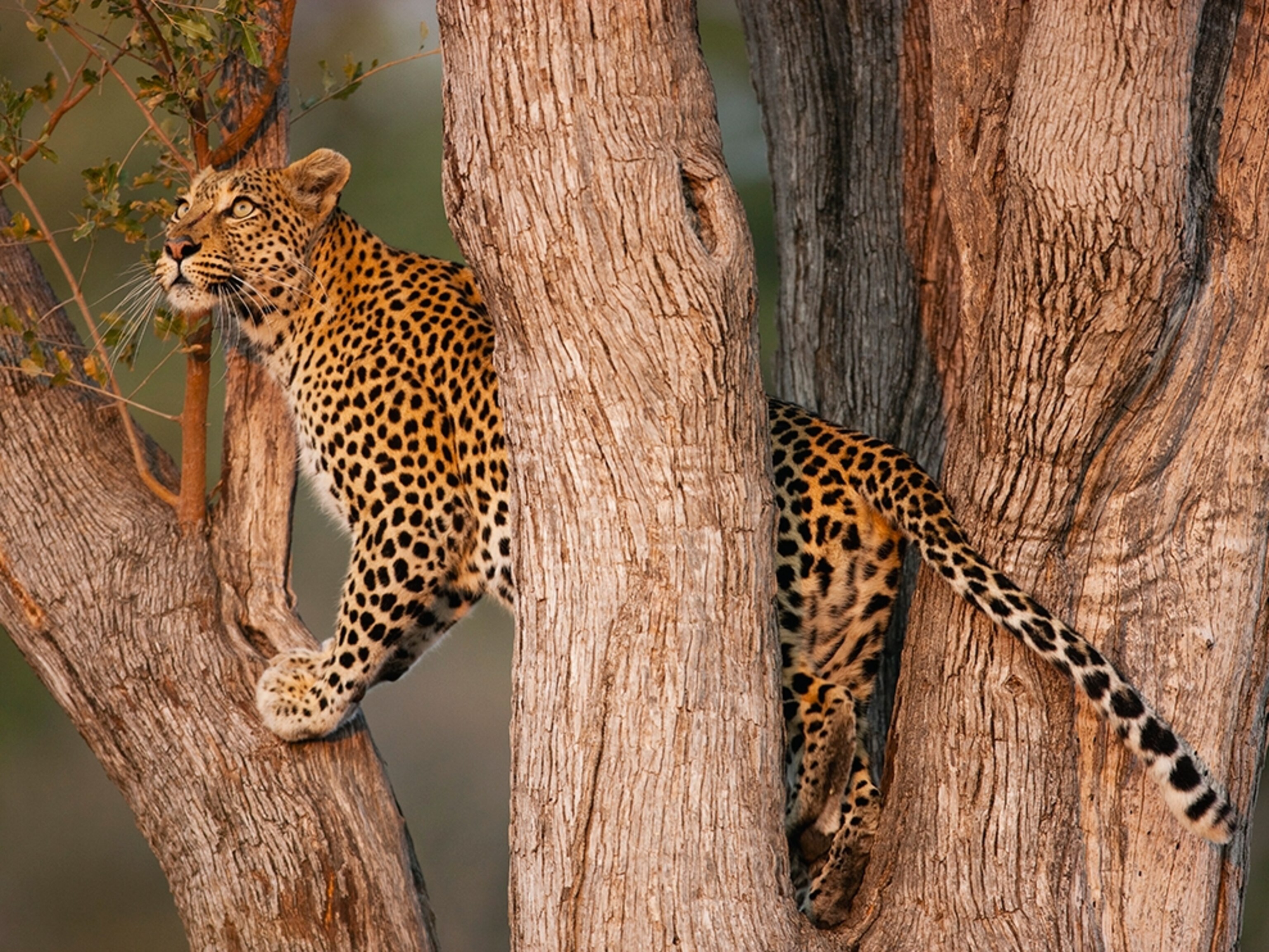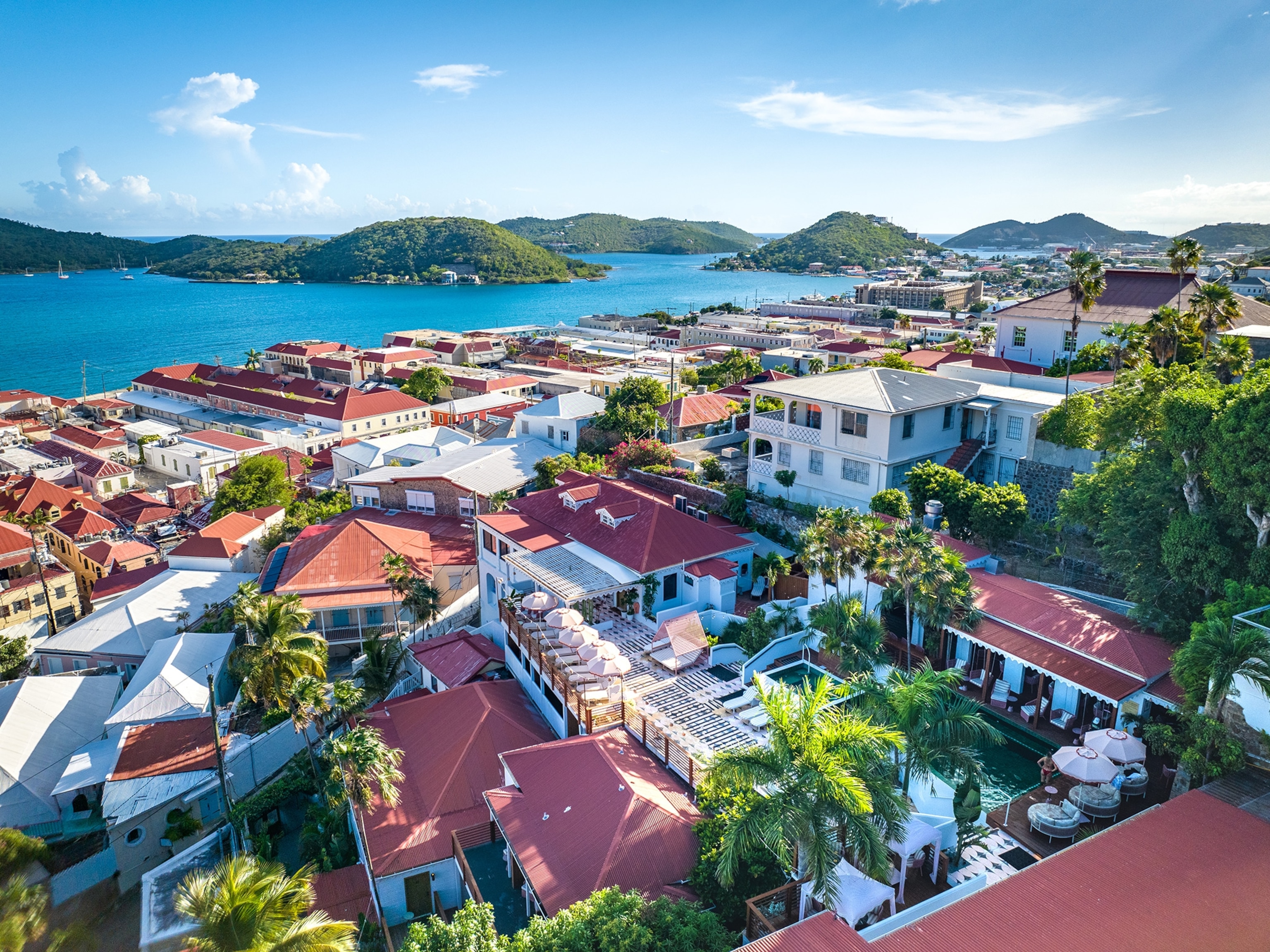
These African lodges lead the way in wildlife conservation
Here’s where to see majestic animals and help to preserve their habitat in Sierra Leone, Rwanda, and South Africa.
Wildlife excursions in Africa are going deeper, highlighting less-visited regions and ecosystems while also leading the charge for conservation in innovative ways. Here are three unconventional safaris in Sierra Leone, Rwanda, and South Africa that reveal as well as protect the extraordinary animals that travelers long to see.
Tacugama Chimpanzee Sanctuary, Sierra Leone
Why go: This pioneering chimpanzee center helps advance the legacy of Jane Goodall.
Inspired by a conversation with primatologist and National Geographic explorer Jane Goodall about two chimps he had rescued, Tacugama founder Bala Amarasekaran opened a chimpanzee sanctuary and rehabilitation center in Sierra Leone in 1995.
Since its founding, Tacugama Chimpanzee Sanctuary has sheltered hundreds of critically endangered western chimpanzees, many of them orphans rescued from wildlife trafficking or from being hunted for bushmeat. The chimps roam five semi-forested enclosures, some as large as 16 acres, on the sanctuary’s grounds in Western Area Peninsula Park, a biodiversity hotspot. Viewing platforms allow visitors to see the chimps’ human-like behavior up close—they’re our closest living relatives with a 98.6 percent DNA match—and extended stays in the sanctuary’s treehouse lodges showcase life in the rainforest. “You wake up in the canopy, amongst the trees, to the smell of orchid perfume,” says Aram Kazandjian, Tacugama’s development manager.
All proceeds go toward the sanctuary’s operation and other conservation projects. Tacugama has also taken a leading role in national policy and international advocacy, working with the Sierra Leone government, the World Bank, and Interpol to prevent wildlife trafficking, tighten laws on bushmeat hunting, and add environmental workbooks to the school curriculum. “We’re still receiving baby and orphan chimpanzees at an alarming rate,” Kazandjian says. “Species are driven to extinction by human activities, and we have to fight that.”
When Goodall visited in February 2019, the sanctuary had a surprise for her: Due to Tacugama’s initiative, Sierra Leone has now named the chimpanzee its national animal.
Safari planner: On September 5, 2019, Sierra Leone launched a visa-on-arrival program, making it much easier for travelers to visit the country. An easy 35-minute drive from Freetown, Sierra Leone’s capital, the sanctuary offers daily tours or overnight stays in its six ecolodges, which are designed as treehouses or traditional roundhouses and have decks with outdoor hammocks overlooking the rainforest. Tacugama is developing the first ecotourism circuit around the country, to include Jaibui Island and Loma Mountains National Park.

Magashi Camp, Rwanda
Why go: Learn to track lions in an off-the-beaten-path ecosystem.
Rwanda is famed for its gorilla trekking, but Wilderness Safaris’ Magashi Camp is drawing attention to a little known gem: Akagera National Park. “Magashi Camp is situated in one of the most successful conservation efforts in Africa,” says camp guide Adriaan Mulder. The park encompasses Rwanda’s last protected savannah ecosystem and now sports healthy populations of reintroduced lions and threatened eastern black rhinos, along with some 500 bird species, including the rare shoebill stork. Working with African Parks, a conservation nonprofit, and the Rwanda Development Board, Magashi’s core purpose is to help make the park sustainable through tourism.
Looking for an unforgettable safari experience? Read on.
Overlooking serene Lake Rwanyakazinga, the camp offers game drives through the diverse habitats of the park, ranging from open plains to woodlands to green mountains. Guests become directly involved in helping guides document and safeguard the park’s big cats, using telemetry equipment to track lions and snapping photos to contribute to leopard ID kits. “By supplying us with facial or flank photos of the animals, we can determine which individual leopards we see, and get a rough idea of how big their territories are and how many are within our area,” Mulder says. Another goal of lion tracking is to make sure that the animals don’t stray beyond the park’s protected borders.
Magashi is elevating women; camp manager Anita Umutoni is the first woman in Rwanda to head a high-end lodge.
Safari planner: Contact The Africa Adventure Company to book a stay at Wilderness Safaris’ camps. Of course, you can’t overlook the primates. A stay at Magashi, which features six luxury tents and a lounge decorated in indigenous Rwandan art motifs, can be combined with a visit to Bisate Lodge, which offers gorilla trekking in Volcanoes National Park.
Bushmans Kloof Wilderness Reserve & Wellness Retreat, South Africa
Why go: Walk on the wild side to see zebras in a biodiversity hotspot.
Nestled in the foothills of South Africa’s Cederberg Mountains, in the UNESCO-protected Cape Floral Region, the vast acreage of Bushmans Kloof, a National Geographic Unique Lodge, abounds with hartebeest, springbok, ostrich, and Cape mountain zebras. But there are none of the large predators that keep travelers confined to their vehicles in top safari zones such as the Serengeti or Kruger National Park. Guests are free to mountain bike through red sandstone formations, canoe in the lake, and picnic beside rocky pools.
Want to take a solo safari through South Africa’s wild grasslands? Here’s how.
The elusive Cape leopard is occasionally spotted in the region, but their numbers are dwindling due to human encroachment and farmers feeling they must defend their livestock, though the leopards primarily hunt klipspringer antelope. Partnering with the TreadRight Foundation, Bushmans Kloof has provided local farmers with Anatolian shepherd dogs, which are successfully guarding flocks of sheep. “Finding natural solutions to problems is a must,” says Rory du Plessis, the lodge’s general manager. “Not only will these canine caretakers keep indigenous wildlife alive, they keep alive the spirit of living in balance.”
This ages-old balance is strikingly present in the rock paintings of the indigenous San peoples who have lived in the surrounding area for millennia. Vividly clear despite being up to 10,000 years old, scenes depict hunters spearing elephants and women foraging with digging sticks in some of the 130 ancient rock art sites discovered on the Bushmans Kloof property. A specialist leads guided hikes to interpret their symbolism. And every spring (August to September), life begins anew when the Cape floral bloom carpets the hills with dazzling color and unique species—30 percent of the plants here are found nowhere else.
Safari planner: The best time to visit is from August to September to view the Cape floral bloom. Bushmans Kloof will arrange pickups from Cape Town, roughly 3.5 hours away. The lodge can accommodate up to 34 guests in its range of manor suites and thatched-roof cottages that face a tranquil river and brilliant red rocks where zebras roam.
Go Further
Animals
- Soy, skim … spider. Are any of these technically milk?Soy, skim … spider. Are any of these technically milk?
- This pristine piece of the Amazon shows nature’s resilienceThis pristine piece of the Amazon shows nature’s resilience
- Octopuses have a lot of secrets. Can you guess 8 of them?
- Animals
- Feature
Octopuses have a lot of secrets. Can you guess 8 of them?
Environment
- This pristine piece of the Amazon shows nature’s resilienceThis pristine piece of the Amazon shows nature’s resilience
- Listen to 30 years of climate change transformed into haunting musicListen to 30 years of climate change transformed into haunting music
- This ancient society tried to stop El Niño—with child sacrificeThis ancient society tried to stop El Niño—with child sacrifice
- U.S. plans to clean its drinking water. What does that mean?U.S. plans to clean its drinking water. What does that mean?
History & Culture
- Gambling is everywhere now. When is that a problem?Gambling is everywhere now. When is that a problem?
- Beauty is pain—at least it was in 17th-century SpainBeauty is pain—at least it was in 17th-century Spain
- The real spies who inspired ‘The Ministry of Ungentlemanly Warfare’The real spies who inspired ‘The Ministry of Ungentlemanly Warfare’
- Heard of Zoroastrianism? The religion still has fervent followersHeard of Zoroastrianism? The religion still has fervent followers
- Strange clues in a Maya temple reveal a fiery political dramaStrange clues in a Maya temple reveal a fiery political drama
Science
- Soy, skim … spider. Are any of these technically milk?Soy, skim … spider. Are any of these technically milk?
- Can aspirin help protect against colorectal cancers?Can aspirin help protect against colorectal cancers?
- The unexpected health benefits of Ozempic and MounjaroThe unexpected health benefits of Ozempic and Mounjaro
- Do you have an inner monologue? Here’s what it reveals about you.Do you have an inner monologue? Here’s what it reveals about you.
- Jupiter’s volcanic moon Io has been erupting for billions of yearsJupiter’s volcanic moon Io has been erupting for billions of years
Travel
- Follow in the footsteps of Robin Hood in Sherwood ForestFollow in the footsteps of Robin Hood in Sherwood Forest
- This chef is taking Indian cuisine in a bold new directionThis chef is taking Indian cuisine in a bold new direction
- On the path of Latin America's greatest wildlife migrationOn the path of Latin America's greatest wildlife migration
- Everything you need to know about Everglades National ParkEverything you need to know about Everglades National Park
















